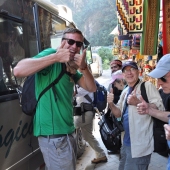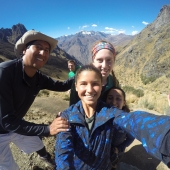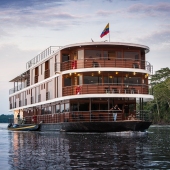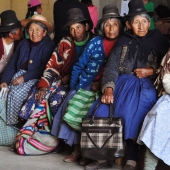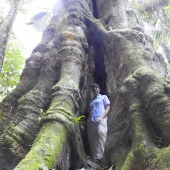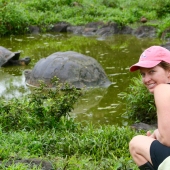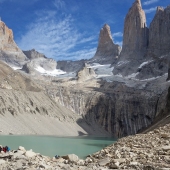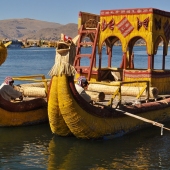Why You Should Keep Sacred Sites on Your Bucket List
Machu Picchu and its surrounding communities (as well as other sacred sites around the world) need your support now more than ever. Forget about overtourism and crowding. The Inca citadel and all archaeological sites in Peru have been abandoned for the last 6 months and lay empty. Even shy spectacled bears have been spotted strolling around the famous Inca ruins. Global pandemics will do that. Guides and drivers are unemployed. Hotels and restaurants are not only empty, but closed. And offices for trains and entry tickets literally shuttered their doors. Meanwhile every citizen including the healthy and able-bodied, have hunkered down since last March, to endure a lockdown that has changed humanity forever. When will Peru reopen for tourism? Follow this link to get the lastest update.

Before covid-19 literally wiped out the world-wide travel industry, the travel community buzzed with stories and legitimate concerns about crowding, overtourism and damage to sacred sites and other high profile destinations around the globe. Then in March 2020, everything came to a standstill. Literally. Now these sites whose local economies depend on their visitors, need travelers and the dough they bring more than ever. In case you're wondering, none of us support going back to that state of congestion and excess tourists.The reality is that it's not likely that masses of people will suddenly show up to trample the historical wonders of the world. The corona virus changed all that.
I've seen articles by national publications advising people to take popular destinations off their bucket lists. And not only that, they are advising people who do plan to travel, to explore alternatives and lesser known sites. This might be one of the most irresponsible recommendations I've ever heard. And here's why.
Countries who are attempting to reopen and restore their renowned historical wonders are likely to focus their attention on the well-known spots when it comes to preparing for visitors. In Peru, the government is getting Machu Picchu ready for travelers. They have established new protocols to allow visitors to explore safely. There will be a limited number of entries and groups will be limited in size as well as spaced out for social distancing. Staff are being trained with the new health and safety standards to support and reinforce the rules for everyone's well-being, not to mention enjoyment. With limited budgets and a reduction of even essential resources, the lesser known spots are not likely to get the attention they need to bring them up to the same safety standards as the big, popular spots. Eventually it may happen. But not realistically in the near future.
Now is not the time to recommend alternatives to the widely known native sites. Advising people to avoid popular destinations only perpetuates the intensity of the economic devastation that has affected literally every country on the planet. Outside Magazine republished an article a few days ago, from last October 2019 that encouraged people to avoid Machu Picchu and instead, traipse off to Kuelap in northern Peru or the Sacred Valley. There is no logical reason to do that now. Kuelap ruins and other remote spots like Colca Canyon, are not easy to get to and are located in areas with limited tourist infrastructure. My partner in Cusco, Vidal, has advised me that exploring these areas is not good advice at this time or anytime in the near future. Besides that, these places are not ideal for out of shape travelers. People need to understand what they're getting in to. It's not just a matter of booking flights and hotels just because you can find availability.
All visitors going to Machu Picchu will pass through the Sacred Valley to get there. But should they penetrate the nearby mountains to explore the rural communities? Qechua farmers have benefitted from the isolation from bigger cities and reduced exposure to covid-19. Flooding small towns with foreigners is not good for the locals because it increases their chances of exposure to covid-19. They need to emerge from their isolation when they're ready.
How can travelers help local communities get through the pandemic?
The best thing to do is pre-book trips for future dates. With flexible cancellation policies and smaller crowds, availability is not an issue. We're taking reservations for 2021. On Sept 2, 2020, Peru announced that International flights would resume on October 1, 2020. (follow this link to get more info)
During this extended downtime, our Peruvian guides have organized "The Qechua Culture Literary Project" as a means to support themselves. Follow this link to read the first story in the collection. If you have any questions, please let me know. I've been involved in the project (as an unpaid volunteer) since the beginning
For now, it seems best for everyone if the tourism and travel industry gets a grip on running safe trips to their main hot spots. The lesser known places can reopen more slowly when they're ready. Work on establishing the transportation channels, special training for guides, and hotel and restaurant sanitation procedures first. Then let the secluded locals decide how they want to interact. This strategy makes sense as it supports the local economy while protecting the health and safety of travelers and local tourism workers.


